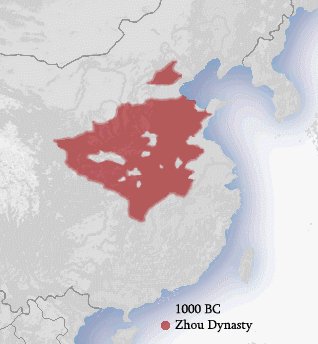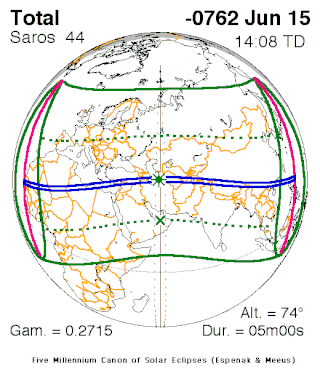Related Research Articles
The 6th century BC started on the first day of 600 BC and ended on the last day of 501 BC.

The 7th century BC began the first day of 700 BC and ended the last day of 601 BC.
The 8th century BC started the first day of 800 BC and ended the last day of 701 BC. The 8th century BC was a period of great change for several historically significant civilizations. In Egypt, the 23rd and 24th dynasties lead to rule from Kingdom of Kush in the 25th Dynasty. The Neo-Assyrian Empire reaches the peak of its power, conquering the Kingdom of Israel as well as nearby countries.
The 9th century BC started the first day of 900 BC and ended the last day of 801 BC. It was a period of great change for several civilizations. In Africa, Carthage is founded by the Phoenicians. In Egypt, a severe flood covers the floor of Luxor temple, and years later, a civil war starts.

The Zhou dynasty was a royal dynasty of China that existed for 789 years from c. 1046 BC until 256 BC, the longest span of any dynasty in Chinese history. During the Western Zhou period, the royal house, surnamed Ji, had military control over territories centered on the Wei River valley and North China Plain. Even as Zhou suzerainty became increasingly ceremonial over the following Eastern Zhou period (771–256 BC), the political system created by the Zhou royal house survived in some form for several additional centuries. A date of 1046 BC for the Zhou's establishment is supported by the Xia–Shang–Zhou Chronology Project and David Pankenier, but David Nivison and Edward L. Shaughnessy date the establishment to 1045 BC.

The 1250s BC is a decade which lasted from 1259 BC to 1250 BC.
This article concerns the period 589 BC – 580 BC.
The year 585 BC was a year of the pre-Julian Roman calendar. In the Roman Empire, it was known as year 169 Ab urbe condita. The denomination 585 BC for this year has been used since the early medieval period, when the Anno Domini calendar era became the prevalent method in Europe for naming years.
This article concerns the period 799 BC – 790 BC.

King Li of Zhou, also known as King Fen of Zhou (周汾王), personal name Ji Hu, was a king of the Zhou dynasty of China. Estimated dates of his reign are 877–841 BC or 857–842 BC.

King Xuan of Zhou, personal name Ji Jing, was king of the Chinese Zhou dynasty; his reign has been reconstructed to be 827/25 – 782 BC. He worked to restore royal authority after the Gonghe Regency. He fought the "Western Barbarians" and another group on the Huai River to the southeast. In the ninth year of his reign, he called a meeting of all the lords. Later he intervened militarily in succession struggles in the states of Lu, Wey and Qi. Sima Qian said "from this time on, the many lords mostly rebelled against royal commands." According to Zhang Shoujie's annotation Correct Meanings (史記正義) to Sima's Shiji, King Xuan is said to have killed the innocent Du Bo and according to tradition was himself killed by an arrow fired by Du Bo's ghost. His son King You would the last king of the Western Zhou.

King You of Zhou, personal name Ji Gongsheng, was a king of the Chinese Zhou dynasty and the last from the Western Zhou dynasty. He reigned from 781 to 771 BC.

King Yi of Zhou, personal name Ji Jian, was a king of the Chinese Zhou dynasty. Estimated dates of his reign are 899–892 BC or 899–873 BC.

The Battle of Muye, Mu, or Muh was fought between forces of the ancient Chinese Shang dynasty led by King Zhou of Shang and the rebel state of Zhou led by King Wu. The Zhou defeated the Shang at Muye and captured the Shang capital Yin, marking the end of the Shang and the establishment of the Zhou dynasty—an event that features prominently in Chinese historiography as an example of the Mandate of Heaven theory that functioned to justify dynastic conquest throughout Chinese history.
The Xia–Shang–Zhou Chronology Project was a multi-disciplinary project commissioned by the People's Republic of China in 1996 to determine with accuracy the location and time frame of the Xia, Shang, and Zhou dynasties.

The Assyrian eclipse, also known as the Bur-Sagale eclipse, was a solar eclipse recorded in Assyrian eponym lists that most likely dates to the tenth year of the reign of king Ashur-dan III. The eclipse is identified with the one that occurred on 15 June 763 BC in the proleptic Julian calendar.

A total solar eclipse occurred at the Moon's descending node of orbit between Saturday, March 8 and Sunday, March 9, 1997, with a magnitude of 1.042. A solar eclipse occurs when the Moon passes between Earth and the Sun, thereby totally or partly obscuring the image of the Sun for a viewer on Earth. A total solar eclipse occurs when the Moon's apparent diameter is larger than the Sun's, blocking all direct sunlight, turning day into darkness. Totality occurs in a narrow path across Earth's surface, with the partial solar eclipse visible over a surrounding region thousands of kilometres wide. Occurring about 18.5 hours after perigee, the Moon's apparent diameter was larger.
Marquis Wen of Jin, personal name Ji Chou, was a marquis of the Jin state. He was also the first ruler of Jin in the Spring and Autumn period.

Xirong or Rong were various people who lived primarily in and around the western extremities of ancient China. They were known as early as the Shang dynasty, as one of the Four Barbarians that frequently interacted with the sinitic Huaxia civilization. They typically resided to the west of Guanzhong Plains from the Zhou dynasty onwards. They were mentioned in some ancient Chinese texts as perhaps genetically and linguistically related to the people of the Chinese civilization.
Duke Yi of Chen, personal name Gui Yue, was a duke of the Chen state.
References
- ↑ "Recording on the Chinese Solar Eclipse". academic.oup.com. Retrieved 2024-10-01.
- ↑ "World History 900-700 BC". www.historycentral.com. Retrieved 2021-03-11.